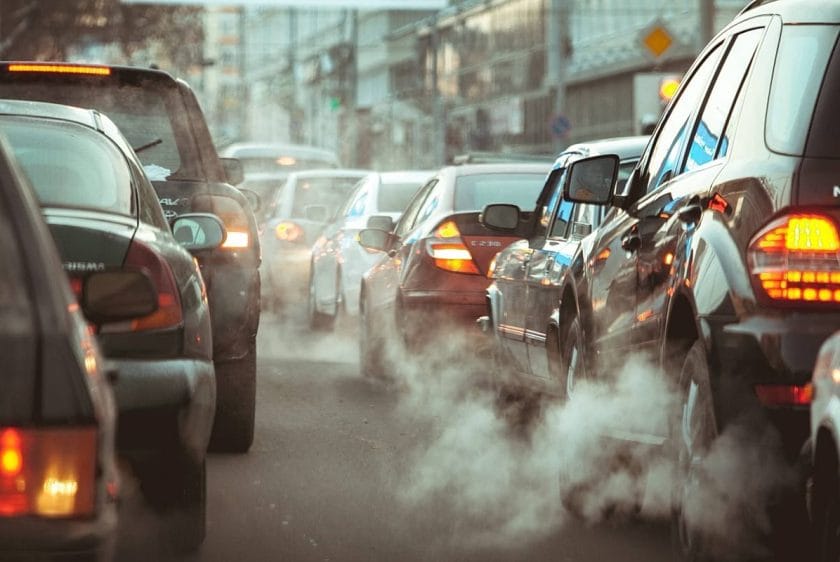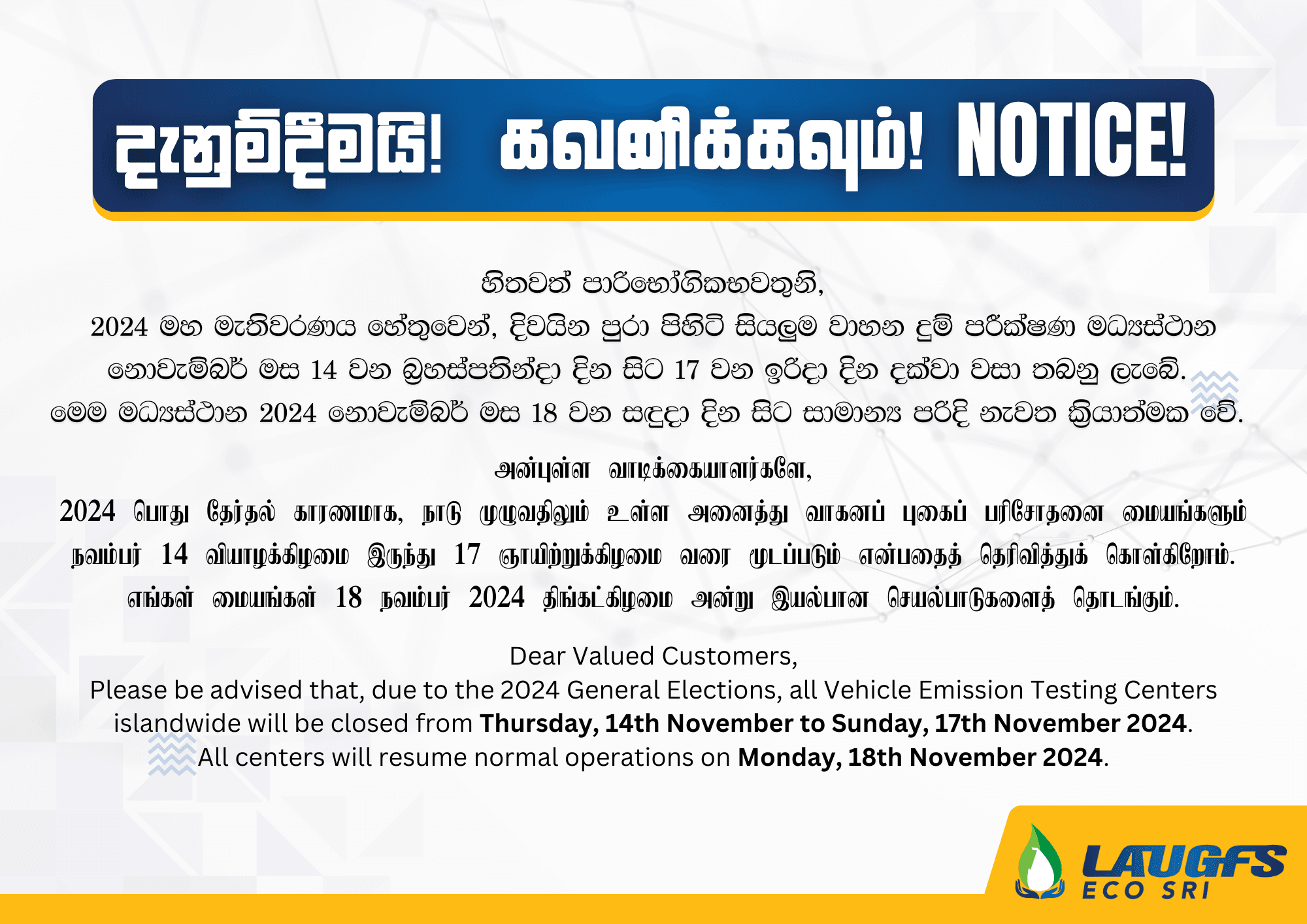Air quality has become one of the most pressing environmental challenges facing Sri Lanka. With rising vehicle numbers, industrial activity and urbanisation, our cities are experiencing higher levels of pollutants that threaten both public health and the environment. Two of the most harmful pollutants commonly found in vehicle emissions are PM2.5 and NOx. Understanding what these pollutants are, where they come from and how they impact our lives is the first step toward cleaner air.
What is PM2.5?
PM2.5 stands for “particulate matter” with a diameter of 2.5 micrometres or smaller – about 30 times thinner than a human hair. Because of their tiny size, these particles can easily penetrate deep into the lungs and even enter the bloodstream. PM2.5 is produced by the incomplete combustion of fuel in vehicles, industrial processes and even the burning of waste. In Sri Lanka, vehicles on busy roads and congested urban areas are a significant source.
Why it matters: Exposure to high levels of PM2.5 is linked to respiratory illnesses, cardiovascular disease, reduced lung development in children and premature death. These health impacts put a growing burden on families and the healthcare system.
What is NOx?
NOx is a collective term for nitrogen oxides, primarily nitric oxide (NO) and nitrogen dioxide (NO₂). These gases are formed when fuel is burned at high temperatures, such as in vehicle engines and power plants. In Sri Lanka, diesel-powered vehicles and outdated engines are some of the largest contributors to NOx emissions.
Why it matters: NOx not only irritates the lungs and aggravates conditions like asthma but also reacts in the atmosphere to form ground-level ozone and fine particles – amplifying smog and health risks. It also contributes to acid rain and the degradation of ecosystems.
How PM2.5 and NOx Affect Sri Lanka
Urban centres such as Colombo, Kandy and Galle face increasing air pollution challenges due to high traffic density. The World Health Organization has highlighted that South Asia has some of the highest PM2.5 levels globally, and Sri Lanka is not immune. For a country with a rapidly expanding vehicle fleet, reducing emissions from transport is essential to protect public health, preserve biodiversity and meet climate commitments.
The Role of Vehicle Emission Testing
Regular vehicle emission testing is one of the most effective ways to limit PM2.5 and NOx emissions from transport. By identifying vehicles that exceed permissible emission levels, testing ensures that only roadworthy and environmentally compliant vehicles operate on our roads. At LAUGFS Eco Sri, we use internationally accepted testing methods to measure pollutants and provide drivers with clear, accurate results.
By maintaining your vehicle and ensuring it passes emission tests, you not only comply with legal requirements but also contribute directly to cleaner air. Simple steps like timely servicing, using quality fuel, replacing faulty filters and maintaining proper tire pressure can also reduce your vehicle’s emissions.
A Cleaner Future is Possible
Every driver and fleet operator has a role to play in reducing Sri Lanka’s air pollution. Through consistent emission testing, better maintenance and an eventual shift to cleaner technologies, we can significantly cut PM2.5 and NOx levels. This means healthier communities, clearer skies and a sustainable environment for future generations.
At LAUGFS Eco Sri, our mission is to support this journey by offering reliable, accessible and transparent vehicle emission testing services across the country. Together, we can drive toward a cleaner, healthier Sri Lanka.






